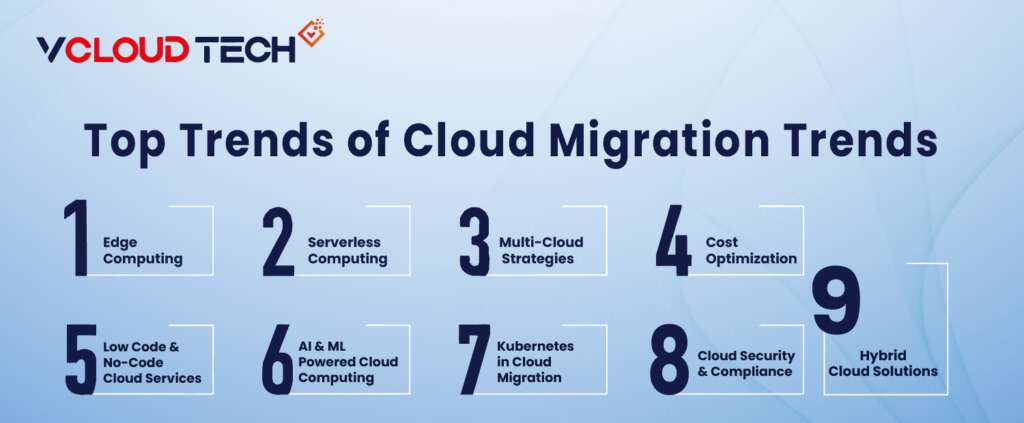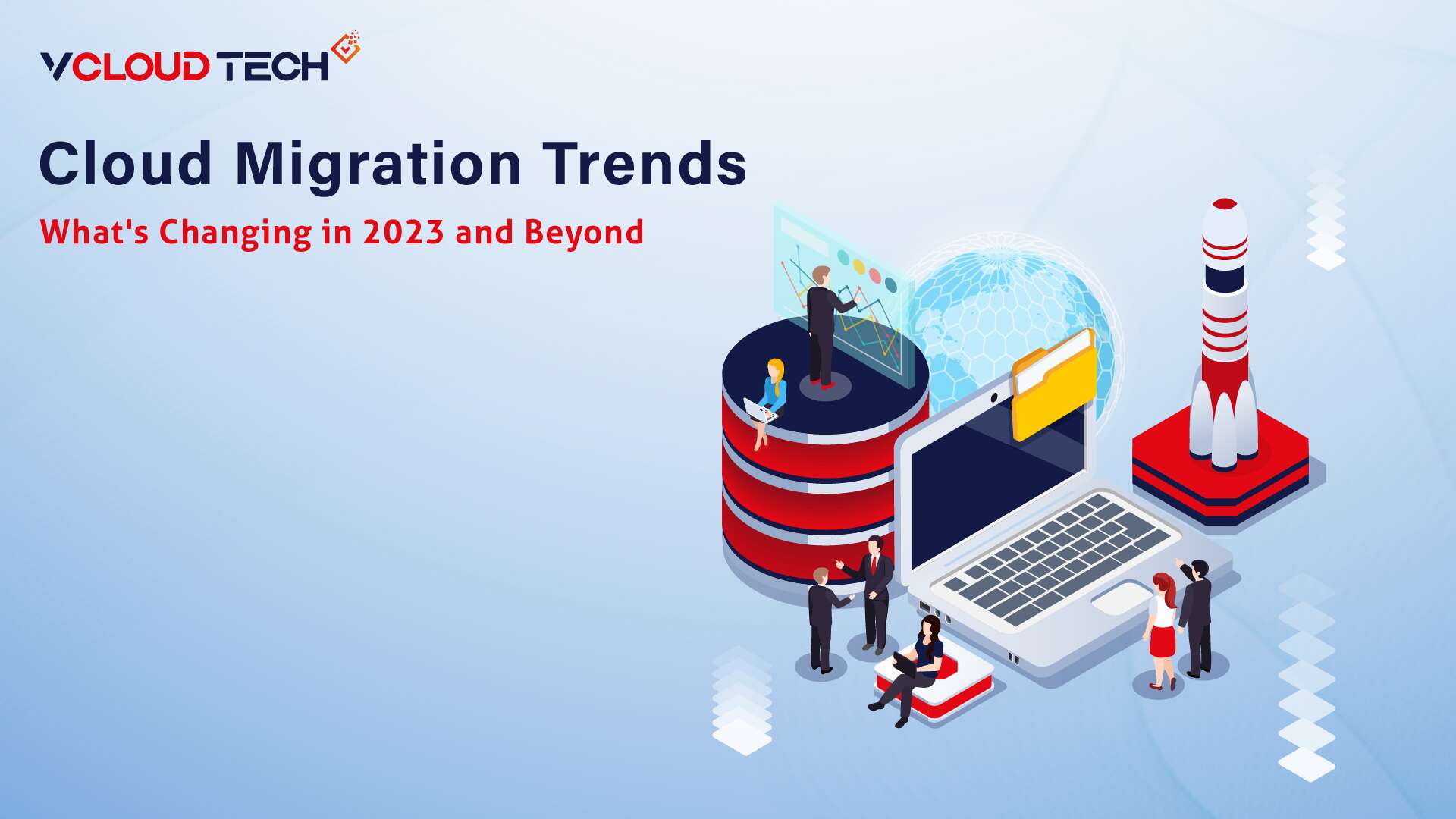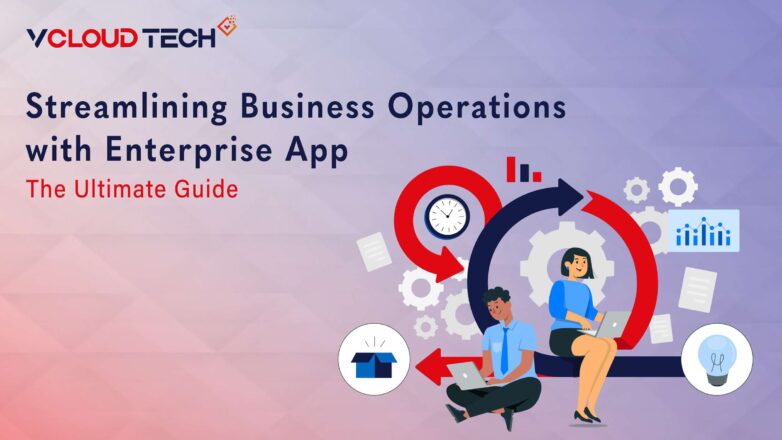Businesses would undoubtedly contemplate Cloud Migration Trends to speed growth and cut expenses as they uncover additional digitalization opportunities. A Gartner analysis projects that the global adoption of cloud services will increase by 21.7% in 2023, or $597.3 billion. This surge in cloud migration trends reflects the ever-evolving landscape of technology adoption.
It is hardly surprising that cloud computing is becoming widely adopted and migrated as numerous developing technologies enter company processes. Nevertheless, cloud initiative failures are hardly unheard of.
If the migration process is done cautiously, businesses can find it easier to get the full value of their cloud expenditures. The cloud offers a safe and adaptable platform. This helps companies maintain their competitiveness in a rapidly changing digital environment. Explore this resource for up-to-date facts. Gain a deeper understanding of the trends, obstacles, and achievements around cloud migration for enterprises.
What is Cloud Migration?
Moving an organization’s data, apps, and other business components from on-premises infrastructure to the cloud is called Cloud Migration. It entails moving the company’s digital assets to a cloud—based infrastructure, including data, software, and services.
Top Cloud Migration Trends
AI & ML Powered Cloud Computing
AI and ML-powered cloud computing is one of the most popular technologies in cloud migration. It revolutionizes how businesses function in the digital age. Applications for AI and ML hosted on the cloud are used to analyze data and automate processes. As a result, they offer previously unattainable insights. Cloud service providers now offer Artificial Intelligence and machine learning capabilities. Hence, these capabilities allow businesses to take advantage of the power of cloud data. These technologies are applied to automation, data analysis, and improving user experiences. According to Business Strategy Group Research, 39% of respondents cite AI & ML as a crucial workload requirement. This motivates them to choose cloud providers other than their primary ones. Cloud computing allows businesses to store and process massive amounts of data in real-time without worrying about infrastructure or maintenance. That empowers enterprises to make data-driven choices that can impact their bottom line.
Low Code and No-Code Cloud Services
Low-code and no-code services are becoming more and more common as cloud computing gains traction. These services enable enterprises to quickly develop and implement scalable applications without large capital expenditures on hardware and software infrastructure. It benefits the software development sector by offering a quicker and more effective method of developing and implementing apps. Developers may create sophisticated apps without writing a line of code with pre-built templates and modules, drag-and-drop capabilities, graphical user interfaces, and low-code and no-code cloud services. As a result, creating an application takes less time and effort and increases accessibility for people who are not technically inclined. It’s one of the well-liked Cloud Migration Trends expected to happen soon.

Kubernetes in Cloud Migration
One popular technology for orchestrating containers that are used to automate and manage containerized applications is called Kubernetes. Modern cloud migration relies heavily on containerization technologies like Docker and Kubernetes. They enable faster migration and scalability by offering portability and uniformity in managing applications across many cloud environments. Kubernetes enables enterprises to effortlessly oversee their containerized applications throughout various cloud environments, simplifying the process of migrating apps between cloud providers. Kubernetes also facilitates cloud infrastructure optimization and lowers operating expenses for enterprises.
Edge Computing
A modern concept known as Edge Computing moves data storage and processing power closer to end users, gadgets, and sensors. Edge computing provides businesses several advantages within the cloud migration framework, including decreased latency, enhanced network bandwidth, and improved data privacy. Organizations may process and analyze data in real time by implementing edge computing infrastructure, which can be especially helpful when prompt insights are crucial. By enabling businesses to store private information closer to the point of origin and lowering the possibility of data breaches, edge computing can also assist them in adhering to data regulations.
Multi-Cloud Strategies
Organizations are increasingly adopting multi-cloud strategies to avoid vendor lock-in, improve redundancy, and enhance flexibility. This trend involves deploying workloads across multiple cloud providers, such as AWS, Azure, and Google Cloud, to meet specific business needs.
Serverless Computing
Serverless architectures, like AWS Lambda and Azure Functions, are becoming popular for cloud migration. They allow organizations to focus on writing code while the cloud provider manages the underlying infrastructure, optimizing resource utilization and scalability.
Cloud Security and Compliance
As cloud migration grows, so does the concern for security and compliance. Organizations focus on robust security practices, data encryption, and compliance with regulations like GDPR and HIPAA to protect sensitive data in the cloud.
Cost Optimization
Managing cloud costs efficiently is a continuous concern. Organizations are adopting cloud cost management tools and practices to monitor and optimize their spending in the cloud, which includes rightsizing resources and implementing spot instances.
Hybrid Cloud Solutions
Many enterprises opt for hybrid cloud models combining on-premises infrastructure with public and Private Cloud Migration. This approach provides a flexible, data-sensitive option for cloud migration.
These trends reflect the evolving landscape of cloud migration, driven by technological advancements, changing business needs, and the increasing importance of data in the digital age. Staying up-to-date with these trends is essential for organizations looking to optimize their Cloud Strategies and maintain a competitive edge in a rapidly changing technological environment.
Current Trends in Cloud Adoption
While in 2012, one in three Americans believed that The Cloud was related to the weather, Gartner now projects that global end-user spending on Public Cloud Migration would approach $600 billion by 2023.
Today’s adoption trends for cloud computing demonstrate a growing move toward cloud-based services and solutions. Businesses use cloud migration to exploit its cost-effectiveness, scalability, and flexibility. That allows them to improve operational agility, stimulate innovation, and provide seamless consumer experiences.
The increasing use of hybrid and Multi-Cloud Migration solutions enables companies to take advantage of the advantages offered by many cloud service providers and tailor their infrastructure to meet unique requirements. Emerging trends like edge computing, serverless architecture, and artificial intelligence integration are changing the cloud landscape and opening up new business opportunities for companies worldwide as cloud technology advances.
According to a recent Zippia Report,
- 94% of businesses employ cloud services.
- Today, 67% of enterprise infrastructure hosted on the cloud.
- A multi-cloud strategy is in place or developed by 92% of firms.
- 48% of companies use the cloud to store their most crucial data.
Cloud services are being adopted at a rate that doesn’t seem slowing down; in 2022, almost 70% of Enterprises Reported accelerating their cloud migration. The icing on the cake: 60% concur that their ability to leverage cloud capabilities enabled companies to generate more steady revenue over the previous year. As a result, by 2025, cloud computing expenses for businesses are expected to account for 51% of total IT spending.
Companies With Successful Cloud Migration
Cloud migration has become increasingly popular across a variety of industries. In recognition of the potential for cost reduction, heightened operational efficiency, and improved customer experiences, sectors like finance, healthcare, retail, manufacturing, and technology have embraced cloud technology to transform their business processes. Several noteworthy instances include:

Netflix:
A prominent entertainment streaming platform, Netflix transitioned its infrastructure to the cloud gradually over a decade. By utilizing Amazon Web Services (AWS), Netflix achieved seamless scalability and global reach, enabling it to handle massive amounts of streaming data and deliver a high-quality user experience to millions of subscribers worldwide.
Coca-Cola:
The renowned beverage company Coca-Cola adopted cloud migration to enhance its IT infrastructure and streamline global operations. By migrating to AWS, The Coca-Cola Company achieved a 40 percent reduction in operational costs and an 80 percent decrease in IT help desk tickets, thanks to increased automation.
General Electric (GE):
GE, a multinational conglomerate, embarked on an extensive Cloud Migration Journey. With the support of Amazon Web Services (AWS), GE transferred its workloads and applications to the cloud. This transformation allowed GE to enhance its digital capabilities, utilize advanced analytics for predictive maintenance in industrial operations, and drive innovation across its various business units.
Spotify:
The popular music streaming service, Spotify, depends on the cloud for its extensive music library and seamless user experience. In 2016, it efficiently used the cloud infrastructure provided by Google Cloud Platform (GCP) to migrate 1,200 online services and data processing DAGs (directed acyclic graphs) from their data centers to the cloud.
Airbnb:
As a leading online marketplace for lodging and tourism experiences, Airbnb Migrated to the Cloud to support its rapid growth and global expansion. By partnering with Amazon Web Services (AWS), Airbnb achieved the scalability necessary to meet the increasing demand for its platform, ensuring a dependable and consistent experience for both hosts and guests.
What Does The Future Hold- Cloud Trends In The Upcoming Years?
In the next decade, AI-powered Cloud Data Migration will transition from being an option to becoming a standard practice for digital transformation. Simultaneously, low-code and no-code strategies will rise in prominence. According to a survey, by 2024, most organizations will utilize codeless development tools for at least 30% of their AI and automation initiatives. By 2026, organizations will integrate AI-driven features into various business technology sectors, leveraging them to achieve better outcomes without relying on technical AI expertise, expected at a rate of 60%.
In line with emerging trends, it projected that by 2026, 85% of organizations will harness AI and ML, natural language processing (NLP), and pattern recognition to enhance predictive capabilities and boost worker productivity by 25%.
Furthermore, a separate report forecasts that the global cloud computing industry will reach USD 1,554.94 billion by 2030, experiencing a Compound Annual Growth Rate (CAGR) of 15.7%. Considering this wealth of data and evidence, it is evident that cloud migration will represent a transformative shift for enterprise solutions in the coming years. Furthermore, the Asia-Pacific region is poised to be the fastest-growing region in this context, alongside the Western markets.
Wrapping Up the Discussion
The trends in Cloud migration is evolving as it appear to be a daunting challenge for any organization. However, it can be a seamless and successful transition when executed with the right strategy and support. In today’s digital age, it is a crucial step for any organization seeking to remain competitive. That is where VE3 offers the essential expertise and resources needed to navigate the entire process.
We begin by assessing the organization’s existing IT infrastructure and providing recommendations for the most suitable cloud solution. Then, we execute the migration with minimal disruption to daily business operations. Additionally, we offer ongoing support and maintenance to ensure that the cloud environment remains optimized for performance, security, and compliance. Our systematic strategy enables organizations to fully harness the potential of cloud computing. This leads to enhanced efficiency and increased IT Agility in achieving their business objectives. If you are ready to make a move to the cloud, don’t hesitate to get in touch with us to discover how we can assist you in reaching your goals.
Reach out to us and book a Free Consultation with vCloud Tech or chat with one of our representatives. Connect with us on Twitter, Facebook, Instagram, and LinkedIn for more information.









